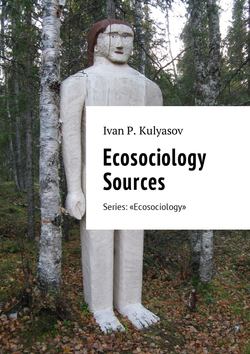Читать книгу Sources ecosociology. Series: «Ecosociology» - I. P. Kulyasov - Страница 6
Environmental theories
Social evolutionism
ОглавлениеSocial evolutionism was founded by Herbert Spencer (1820—1903). Spencer proposed and justified the theory of social evolution before the emergence of Darwin’s theory of biological evolution. Spencer was developing sociology as a natural science. His theory of society is based on the evolution theory, in particular, the idea of organic development and struggle for existence. Spencer believed that the organic world developed from the non-organic one, and that humans and society are a product of the organic world (organic school). He proposed his understanding of the universal evolution law – the energy conservation law applying both to nature and to society. He used this law for deriving social development trends1.
Albert Eberhard Friedrich Schaffle (1831—1903), who viewed society as an organism, also made a large contribution into further development of the social evolution theory and the organic school. He proposed a structure of social interaction using the examples of production and distribution of collective ownership. The subject matter of sociology is spiritual interaction between humans assembled into social bodies (organisms). The main difference of human communities from an animal organism is the existence of collective consciousness. Social organisms struggle for survival and natural selection, as a result, only the fittest survive2.
Rene Worms (1869—1926), comparing society with an organism, believed that they had a lot in common. He described society using the terms and notions of physiologists, anatomists and doctors. Anatomy of a society reveals its form and components – cells (individuals), organs (organizations) and tissues (social structures). Social physiology describes social processes, nourishment (when some organizations, communities, states and cultures are absorbed by others) and reproduction of individuals, social forms and structures.
His classification of societies reflects this vision of things social. He emphasizes that classification should be based on the anatomic structure of societies rather than on their physiological processes. Social anatomy indicates the current stage of society’s development. As for physiological descriptions, they can only apply to specific parts of society.
Considering social pathology, therapy and hygiene, he maintained that a society may be damaged by external influence or from within. The fabric of society may sustain a severe external damage penetrating through all the ways inside. And, vice versa, inner social diseases may leak outside. For example, bloodless parts of the fabric of society are rejected by means of mass migration. Another example would be a war, where contribution claimed by the winner can be compared with someone else’s blood transfused to the fabric of society and causing a disease. As a result, this brings suffering both to the winning and to the losing nations. The same would apply to industrial wars. Another phenomenon that is worth mentioning relates to parasitism when one society “piggy-backs” on another.
Public maladies can be treated by public medication, which, once used, may be called a public therapy. Using the healing forces of society’s nature is better than trying to heal the fabric of society. To prevent a disease, the rules of public hygiene should be complied with3.
In the 1950—1970s, evolutionism developed into post-industrial theories, to be considered in more detail in the corresponding chapter. At the same time, evolutionism developed into neo-evolutionism (the socio-cultural evolution theory – an inter-disciplinary area across ethnology, anthropology, paleontology, archeology and historiography) and sociobiology (the sociobiological theory – an inter-disciplinary area across biology, sociology, zoology, archeology and genetics).
Post-industrial theories viewed social development as a single-line or universal evolution. Neo-evolutionists introduced an important aspect, viewing the development history of the global society as a multi-line evolution, with various communities and societies developing in different directions due to the need to adapt to different ecological environments (for example, climate zones or natural and cultural landscapes). The sociobiological theory of human behavior is based on the principle of genetic-cultural evolution, with natural selection going at the individual reproductive and group levels. Therefore, evolution applies both to the individual and to social forms.
1
Spencer H. Social statics. 1851.; The study of sociology. 1872.; Descriptive sociology. 1873—1881.
2
Schaffle A.E.F. Bau und leben des sozialen körpers. 1875—1878. (in German)
3
Worms R. De natura et methodo sociologiae. Lutetiae Parisiorum: V. Giard et E. Brière. 1896. 102 p.; Organisme et société. Paris: V. Giard et E. Brière. 1896. 412 p. (all in Latin)
